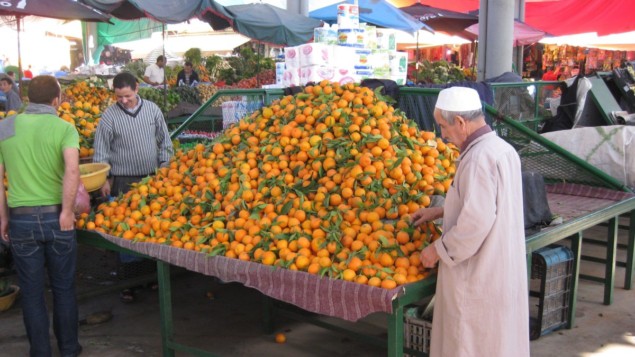
Over the past few years I have spent more time in my native Canada, where I do enjoy a visit to the supermarket (Fortinos is my favourite). Like in many countries outside of the UK, Canadian supermarkets display apples and oranges in mounds with steep slopes. Indeed, I am often worried that picking the wrong apple from a display will start an avalanche that could engulf me in fruit.
It turns out that I am not the only physicist with this concern. Eduardo Rojas, Pablo Gutiérrez and colleagues at several Chilean universities have looked at this problem in their paper “Stability of a tilted granular monolayer: How many spheres can we pick before the collapse?”. The monolayer here is an idealized facet of a fruit display that is modelled as a crystalline 2D arrangement of spheres.
The team’s calculations and simulations suggest that when the slope is very steep, removing just one piece of fruit can lead to collapse. At the other extreme, very gentle slopes never collapse regardless of how much fruit is removed. No surprise there, and it’s the intermediate range of slopes where things get interesting. The team found that in this range, an avalanche occurs after about 10% of the apples are removed.
This, of course, is very important information for people who stock the produce sections of supermarkets – although I suspect that they already know this.
Costly diversions
Despite modern radar systems and satellite imagery, there are still two or three serious incidents involving ships and icebergs ever year in the northern hemisphere. Some of these encounters result in severe damage to vessels and ships being abandoned. And even if a collision does not occur, an unexpected encounter with icebergs can lead to a costly diversion – as could false detections.
Now, two astrophysicists at the UK’s Lancaster University have developed an artificial intelligence (AI) system that uses satellite data to identify icebergs and track their motions. The technology has been adapted from a technique that uses AI to search for and characterize clusters of galaxies in large areas of the sky.
Lancaster’s John Stott and Matthew Chan are now working with the university to commercialize the technology – with help from a £300,000 award from the UK’s Science and Technology Facilities Council.
“We looked to apply our technique to areas beyond astrophysics and the vision for this project is to further develop our automated iceberg and sea ice detection system, such that it can be used as a commercial product,” says Stott.
They say that their system has a 94% success rate and works under any sort of cloud cover. It does this by identifying icebergs and sea ice in satellite images taken using large-area synthetic-aperture radar (SAR). When the commercial system is up and running, the locations of potential hazards will be shared with clients in the maritime industry – including merchant shipping, fishing, tourist vessels and shipping insurers.



